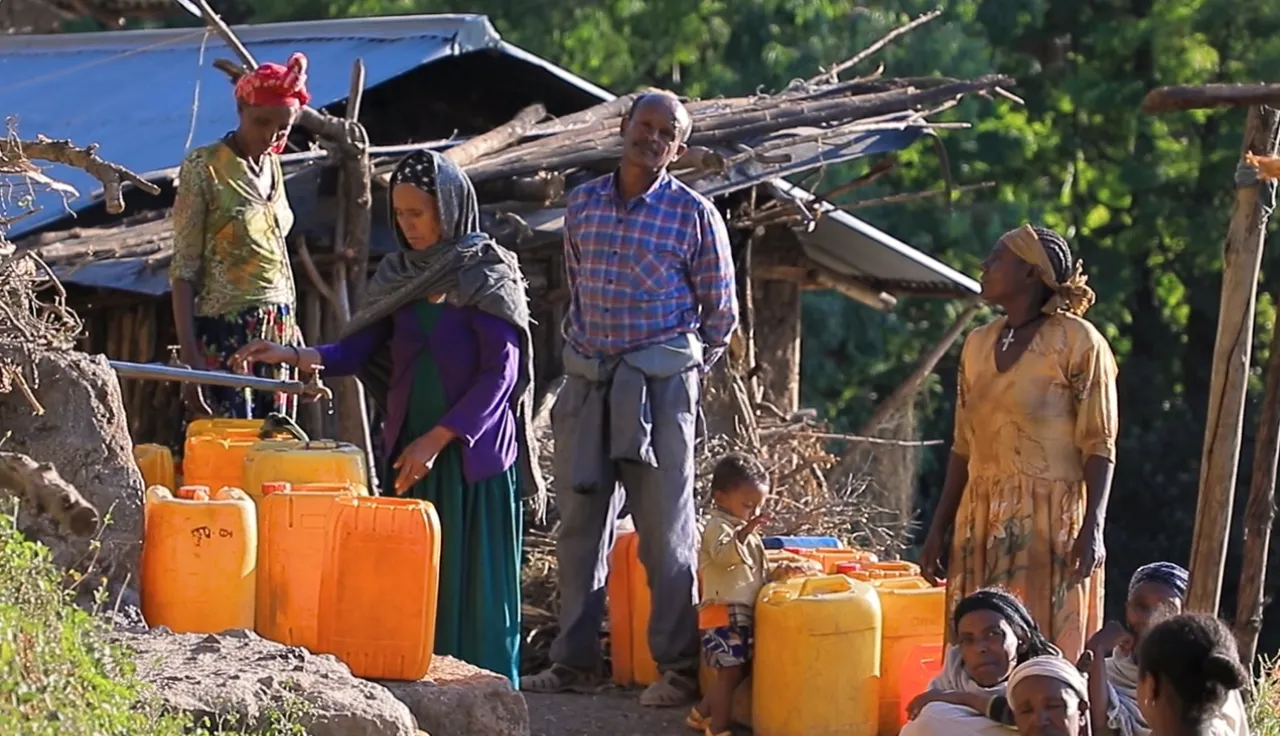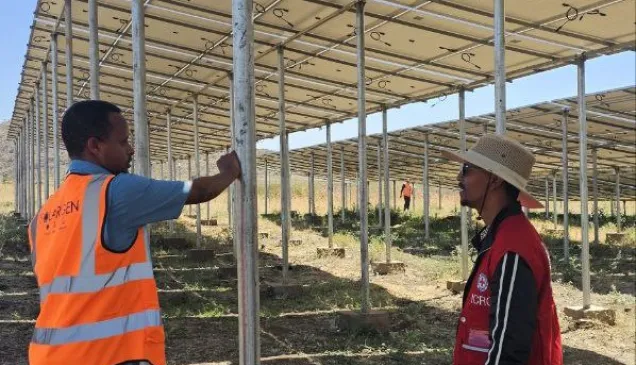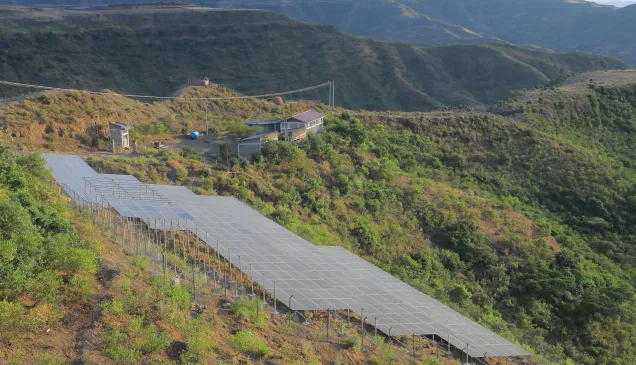Ethiopia: Solar power helps bring back water to the population of conflict-affected Lalibela

Zerihun Legesse is a Water and Habitat Project Manager at the Delegation of the International Committee of the Red Cross (ICRC) in Ethiopia. He is currently managing an urban water supply project in Lalibela, a world heritage site in the Amhara region of northern Ethiopia, disrupted by conflict for several years. To mark the occasion of World Water Day, which celebrates water and inspires action to tackle the global water crisis, Zerihun tells us about the people’s struggle to access water and how this project is helping them.
Why did the ICRC decide to launch this water project in Lalibela?
For four years or so, the population of Lalibela town is suffering from the effects of conflicts in the northern part of Ethiopia. There has been continuous power interruption. Electricity is necessary to pump water, but electricity in Lalibela comes from Alamata, a town situated in a border area between the Amhara and Tigray regions which is particularly affected by conflict. In Lalibela town, shortage of power is frequent. Because of the power outage, the town water utility has been struggling to pump sufficient quantities of water in Lalibela, with severe water shortages affecting the population. Sometimes they had to bear with electricity and water cuts lasting for several months or more. The ICRC decided to intervene to solve these frequent power cuts through a solar powered water supply project.
We also decided to intervene because the water supply system of the town itself is very old. Many of the components, such as the pumps, pipes, and the electrical and electromechanical components, are deteriorated and damaged. In addition to the power shortage, the system was operating at very low efficiency. The ICRC decided to rehabilitate the whole system and make it work thanks to solar power.

Adna Melka, resident of Lalibela town.
"The problem was severe especially because of the conflict. The power cuts affect our access to water a lot. During the challenging time we thought we were forgotten. The Red Cross has done a lot for us."
What is special about this project?
The Lalibela project is the ICRC’s biggest solar water supply project in Africa. Of course, we have been implementing different solar projects in different locations, but when you come here, you can really sense how large it is. It serves the population of a whole town, more than 77,000 people.
The other very special thing about this project is that Lalibela is one of the world's heritage sites recognized by UNESCO in Ethiopia. It is home to impressive rock-hewn churches dating from the 7th to 13th centuries. The town is built on a slope next to them.

Zerihun Legesse, ICRC water project manager
How will the people in Lalibela benefit from this project?
Because of conflicts and their consequences, which continue to this day, people in Lalibela have been receiving a very small amount of water for their daily consumption. Their lives have been disrupted. Once the project is completed, the volume of water they get will increase dramatically.
The population already started benefiting from the project. At the initial stage, the ICRC intervened in July 2022, shortly before the end of hostilities in northern Ethiopia conflict. At that time, the power station in Alamata was damaged due to the conflict, so the power coming to Lalibela was interrupted. Power was out for almost two years! So, we solarized one borehole as an emergency response. This was the first phase of the project, which helped the people in Lalibela to get at least some amount of water during that difficult time.
After assessing the very critical water shortage for the community of Lalibela, the ICRC designed a second phase of the project. It aims at providing solar power to three pumping stations. All the electrical and electromechanical components will be renewed, and all the pumps will be replaced by brand new pumps. These three pumping stations will be purely operated with solar power. To avoid any outage, the system will operate with two other sources: grid power when available, and generator power. We also work on the boreholes themselves, which are the source of the water. When this second phase is completed, a total of three boreholes will be solarized. The final system will operate with solar power during daytime, and with grid or generator during nighttime.
In addition to the population of Lalibela, the town’s Water Utility will benefit greatly from the project. They have been paying a very big amount of money for electric utilities to operate the pumps with grid power, even if it worked only intermittently. They will be relieved when the solar power starts to pump water, reducing this electric fee cost by more than half.
Indirectly, the project has a great deal of benefits for the town’s tourism as well. There are many hotels in Lalibela, who will benefit from the continuous water supply for their visitors. Hoping the current conflict eases down and security improves, this will uplift Lalibela’s economy and create job opportunities for the youth and other people in the town.

Solar panel farm in Lalibela
One of the six solar panel farms in one of the three booster stations in Lalibela town. The ICRC water project has a total solar power capacity of 1 Megawatt.
How is the project progressing and when will it be launched?
The project is going on smoothly. Challenges remain, but they are being tackled by the ICRC’s engineering team. The plan is to install four pumps per pumping station, so a total of 12 pumps will be installed. We commissioned or started to operate half of these pumps, and one of the three planned boreholes is already operating with purely solar power during daytime.
65 to 70 percent of the whole project is completed by now. We are expecting to finalize it around July 2025. All being well, water will then start flowing again normally in Lalibela people’s homes, thanks to the sun and to our technical interventions.



